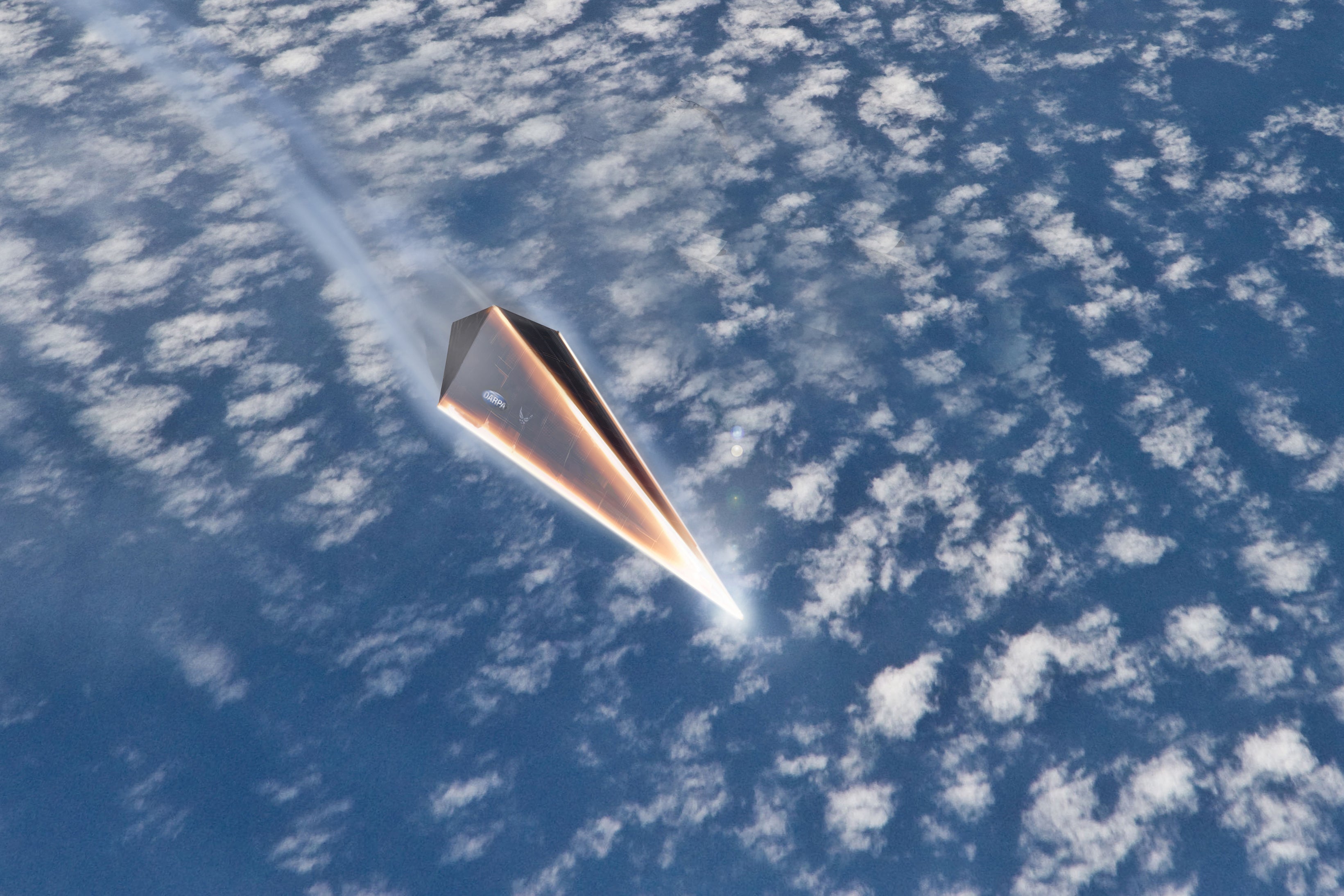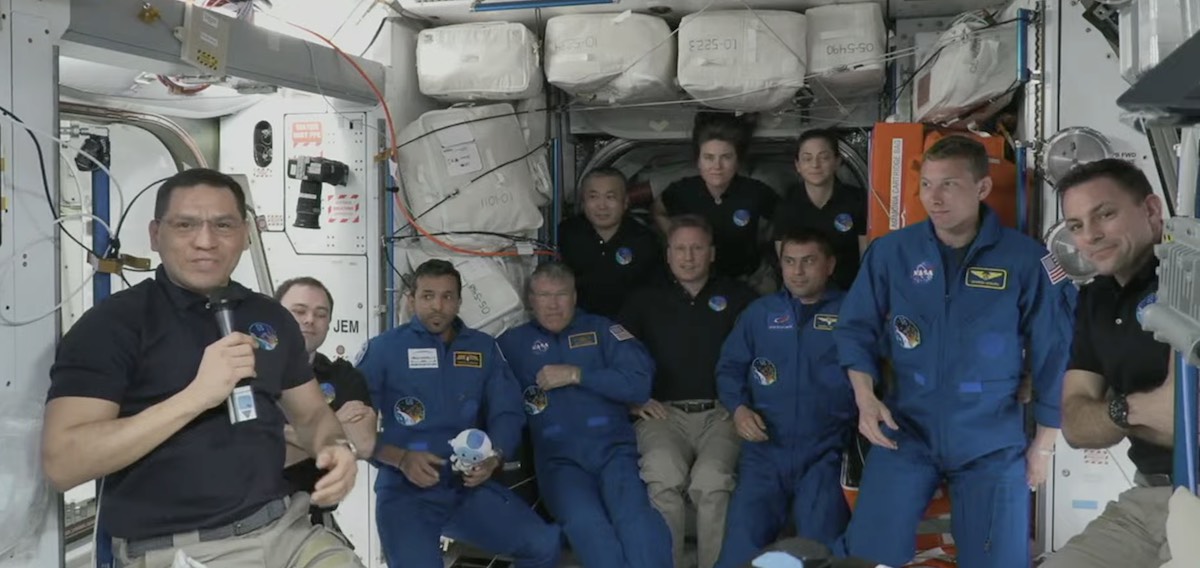Standalone terminals that can switch between satellites in geostationary and low Earth orbit (LEO) are about to get into customer hands for the first time, delivering a real-world test of multi-orbit broadband capabilities operators are increasingly pinning their businesses on.
Legacy geostationary operators have been busy drawing up acquisitions, partnerships, and new constellations to offer multi-orbit services, partly in response to competition from LEO-only heavyweight Starlink, but also to meet evolving connectivity needs in the air and other places terrestrial networks can’t reach.
LEO satellites can provide highspeed broadband at lower latency than spacecraft operating farther away in geostationary orbit (GEO). That’s important for video calls, gaming, and working with new virtual tools and applications hosted in the cloud.
Unlike their geostationary cousins fixed above the equator, LEO satellites can also cover the poles to keep airlines connected during international flights.
But geostationary satellites are better at delivering larger amounts of capacity to high-traffic areas, which is important for relieving congested hotspots in an increasingly connected world.
Meanwhile, medium Earth orbit (MEO) satellites operating between GEO and LEO offer a compromise in performance.

Operators with access to multiple orbits can offer customers greater flexibility and resiliency, and user terminals that can connect satellites across different orbital regimes are key to unlocking their potential.
SES was the first operator to commercialize a multi-orbit broadband network with satellites in MEO and GEO. User terminals that can connect across these orbits have been on the market for at least six years, according to an SES spokesperson.
The Luxembourg-based company started offering broadband services from GEO and MEO a decade ago but has only recently run into multi-orbit competition.
Its main challenger is Eutelsat, the French geostationary fleet operator that bought OneWeb’s LEO constellation last year.
To date, customers wanting to connect to the GEO and LEO satellites Eutelsat now owns must have space for a user terminal for each network, which can be prohibitive for mobile applications such as planes, boats, and land vehicles — critical growth markets for satellite businesses.
This is about to change as Kymeta prepares to start shipping its ruggedized Osprey u8 HGL (hybrid GEO/ LEO) terminal for military vehicles on Eutelsat’s network in March.
Kymeta says Osprey u8 HGL is set to be the first flat panel terminal in the market capable of connecting across operational GEO and LEO satellite networks.
Flat panel terminals using technology such as electronically steerable arrays have a much lower profile than their mechanically steered counterparts, making them more suitable for vehicles with space and weight constraints.
Last year, SES said it had successfully tested a flat panel terminal already equipped on planes from ThinKom called ThinAir Ka2517 across MEO and GEO.
ThinAir Ka2517 has been installed on government planes since 2018, ThinKom vice president of sales and marketing Greg Otto said, and its largest commercial adoption to date has been on U.S.-based Spirit Airlines with around 170 aircraft installed over the last few years.
None of these terminals are currently using MEO, but Otto said they are compatible with the next-generation O3b mPower MEO constellation SES plans to start bringing online before the end of June.
The antennas should also be compatible with the LEO network that GEO operator Telesat plans to start deploying in 2026, he said, which ThinKom plans to confirm once the Canadian company announces a modem partner for the 198-satellite Lightspeed constellation MDA is building.
He said the technology is already approved for use with a pair of satellites U.S.-based GEO player Viasat aims to deploy this year in a highly elliptical orbit (HEO) to add polar coverage to its geostationary network.

Separately, Otto said ThinKom has partnered with European aerospace giants Airbus and Safran on HBCplus (High-bandwidth Inflight connectivity), an Aribus aircraft antenna linefit program currently being certified for use with Viasat’s GEO and upcoming HEO satellites and SES spacecraft across GEO-MEO.
While classed as a flat panel terminal, ThinKom’s technology uses mechanically phased array antennas with spinning discs to track satellites, unlike electronically steered antennas such as Kymeta’s Osprey u8 HGL with no moving parts.
As for MEO-LEO today, SES and Starlink have teamed up to offer an integrated service for cruiseliners, but this currently requires separate terminals for each network and there are no public plans for a merged terminal.
GEO-LEO Foundation
The GEO-LEO Osprey u8 HGL antennas Kymeta expects to deliver for Eutelsat in March are set to arrive before the operator’s OneWeb LEO constellation is able to provide global coverage.
Previously slated to begin global services in early 2024, Eutelsat recently said it expects to have completed only 90% of OneWeb’s ground segment by the end of June following installation and licensing setbacks.
OneWeb is currently available in Canada, the United States, Europe, and Australia, as well as parts of Latin America, the Middle East, Africa, and the Caribbean.
One of the key benefits of multi-orbit services for military users is network redundancy, according to Kymeta senior vice president of product management Lilac Muller, and Osprey u8 HGL is designed to meet the U.S. Department of Defense’s PACE (Primary, Alternate, Contingency, and Emergency) requirements.
“Due to the fact they need redundancy in their networks, having a GEO-LEO solution allows them to switch between networks seamlessly to meet their mission-critical operations of satellite communications on the move,” Muller said.
At 57 kilograms, the multi-orbit terminal is roughly 10% heavier than the GEO-only Osprey that Kymeta released in March 2022.
While operating on a LEO network, Muller said tests achieved up to 195 megabits per second (Mbps) download and 32 Mbps upload speeds, with a latency of less than 70 milliseconds.
Up to 7 Mbps download and 2 Mbps upload speeds are possible on GEO, with latency between 600 and 700 milliseconds.
Muller said non-disclosure agreements prevent her from disclosing specific details about customers and the quantity of terminals being shipped, but said they are being deployed within military branches across the globe.
Israeli antenna maker GetSat is also developing a flat panel antenna designed for military land vehicles that would be compatible with geostationary satellites from Intelsat and LEO.
The Multi Orbit Tactical Terminal (MOTT) is on track for installations starting this summer, according to Blane Boynton, Intelsat’s vice president of product development.
Aviation first
Intelsat has partnered with OneWeb to develop GEO-LEO solutions for commercial airlines while it mulls plans for its own MEO network.
After nearly two years of tests using antenna technology from Ball Aerospace, which became part of BAE Systems in February, and integration designs and hardware from Stellar Blu Solutions, Intelsat says it is just months away from putting the first electronically steered GEO-LEO flat panel terminal into service on a commercial airline.
The operator has been conducting experimental multi-orbit tests on a leased CRJ-700 regional jet fitted with test computers and hardware in the cabin.

A “supplement type certificate” test process with the Federal Aviation Administration is due to start in early March, which would see the jet use the exact configuration that would eventually be installed on planes for customers such as Alaska Airlines and American Airlines.
Intelsat needs to obtain this certificate because the antenna system would be installed after an airline receives the plane from the factory.
The jet completed its latest inflight tests in December with a multi-stop trip taking around 19 hours from Chicago to northern Alaska and back.
Dave Bijur, Intelsat’s senior vice president of commercial aviation, said the company logged speeds of around 150 megabits per second and latency of 100 milliseconds while running on the LEO network.
“GEO is about the same when it comes to throughput but usually features 600-800ms of latency,” he said.
While higher latency doesn’t have much of an impact on something like video streaming, he said it does affect the snappiness of social media applications such as LinkedIn and Instagram and any page with an endless scroll.
According to Bijur, the multi-orbit system would automatically operate on whichever network provides the best customer experience.
“Geography isn’t the defining factor in which network to use,” he added, “but does play a role.”
He said LEO is the only option in far northern Alaska because it is beyond the sight of GEO satellites along the equator, for instance, whereas both networks are options in most other parts of the world.
In contrast, GEO is the only option in a country such as China where Western LEO operators do not have the state’s permission to provide service.
Big barriers remain
Other flat panel multi-orbit antennas slated for release this year for the inflight connectivity market include Resa M from Sweden’s Requtech and the S2000 series of terminals from U.K.-based All.Space, which counts SES as an investor.
But while the availability of multi-orbit terminals is critical for enabling multi-orbit networks to reach their full potential, major barriers still stand in the way of widespread commercial adoption.
“Pricing is still a sizable hurdle in the short term,” Euroconsult consultant Alix Rousselière said.
Kymeta’s Osprey u8 HGL appears to be the cheapest thus far and it is still over $50,000, Rousselière said, limiting its use to deep-pocketed governments with niche needs that can justify purchasing a single expensive antenna versus two cheaper mono-orbit antennas.
“The inherent need for the antennas to be flexible and future-proof drives up costs,” she added.
Kymeta senior director of marketing Brenda Kuhns declined to disclose the prices of the products it sells via distributors.
“I will say that the cost of our Osprey u8 (for government and military) is higher than our commercial products, Hawk u8 (for land mobility) and Peregrine u8 (for maritime),” Kuhns said via email.
Osprey u8 has additional networking technology that enables users to transmit information more securely, she added, along with extra security features for the military environment.
Other commercial challenges include ensuring there is enough satellite capacity available so customers can make the most of several networks, according to Euroconsult, particularly from GEO.
Still, Rousselière said consumers increasingly expect to be seamlessly connected wherever they are, including on the move.
She said demand from consumers to leverage different types of connectivity should continue and drive the industry to adapt, notably by producing cheaper terminals and making their multi-orbit offering more appealing in the marketplace.
This article first appeared in the March 2024 issue of SpaceNews magazine.
Note: This article have been indexed to our site. We do not claim legitimacy, ownership or copyright of any of the content above. To see the article at original source Click Here













